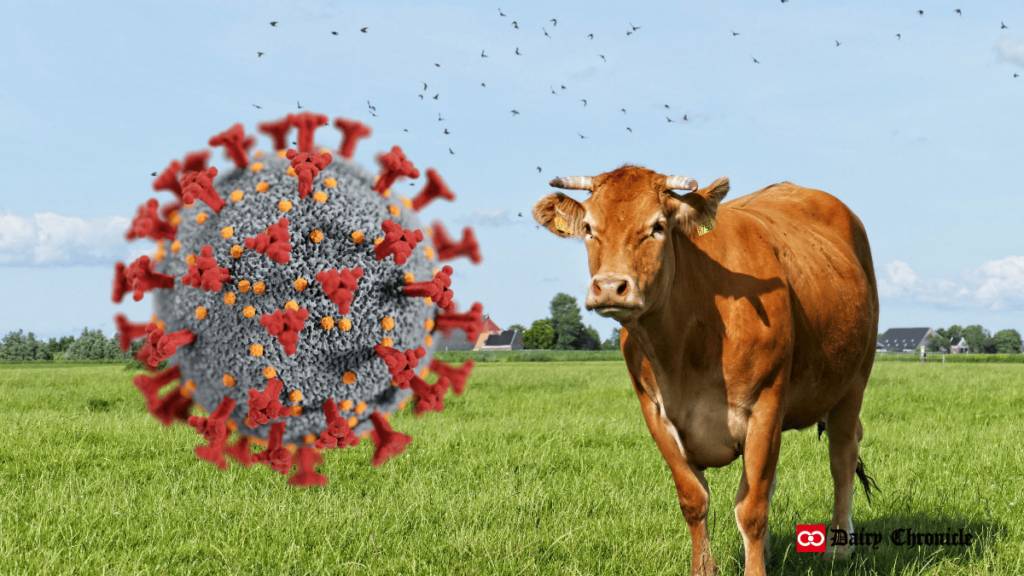Scientists at UTMB have found H5N1 avian flu in Texas dairy cattle and milk, raising concerns about underreported infections and the need for better surveillance.
Scientists at the University of Texas Medical Branch (UTMB) have recently identified H5N1 highly pathogenic avian influenza virus (HPAIV) in dairy cattle and milk from two farms in Texas. This preliminary research, available on the medRxiv preprint server, underscores the urgent need for effective measures to manage and prevent H5N1 outbreaks in livestock and potential spillovers into human populations.
Background
H5N1 HPAIV has been responsible for significant avian deaths globally, impacting wild birds and poultry. The U.S. Department of Agriculture has identified H5N1 infections across 172 cattle farms in 13 states, with recent infections observed in both dairy and poultry farm workers. The dominant strain in these outbreaks is the H5N1 HA clade 2.3.3.4b. The current study aimed to assess the prevalence of H5N1 in dairy farms in Texas, prompted by recent detections in cattle.
Study Design and Methodology
The study was conducted across two Texas dairy farms where H5N1 was detected. UTMB researchers collected various samples, including:
- Cattle Samples: 39 nasal swabs and 14 milk samples.
- Farm Worker Samples: Nasopharyngeal and serum samples from 17 workers.
- Environmental Samples: 24 bioaerosol samples from different farm areas.
These samples underwent molecular assays, cell and egg cultures, and sequencing techniques to identify and characterize respiratory viruses.
Key Findings
- Detection of H5N1 HPAIV:
- H5N1 was found in nine out of 14 milk samples and one out of 39 cattle nasal swabs.
- No influenza A or coronavirus was detected in the nasopharyngeal swabs from farm workers.
- One nasal swab from a sick cow tested positive for SARS-CoV-2.
- Two farm worker serum samples had elevated neutralizing antibodies against H5N1.
- Viral Characteristics:
- H5N1-positive milk samples were closely related to recent Texas epizootic strains of clade 2.3.4.4b.
- Mutational analysis revealed changes linked to viral virulence, host specificity, and drug resistance.
- Environmental and Worker Exposure:
- Bioaerosol samples did not show molecular evidence of influenza or coronaviruses.
- The presence of neutralizing antibodies in farm workers suggests possible undiagnosed infections.
Significance and Implications
The detection of H5N1 in milk, despite a low presence in nasal swabs, indicates that infected cattle can shed the virus through milk for extended periods. This raises concerns about the potential for underreported infections and the broader implications for public health.
- Surveillance and Reporting: The study reveals gaps in current surveillance systems, suggesting that HPAIV infections among farm workers may be more prevalent than officially reported. Low testing rates contribute to underreporting, potentially leading to larger outbreaks.
- Need for Improved Measures: The study highlights the importance of enhanced epidemiological data collection and better collaborative efforts between government agencies and the livestock industry to manage H5N1 risks effectively.
- Future Directions: The findings emphasise the need for comprehensive monitoring and intervention strategies to prevent H5N1 spread in dairy farming environments and address potential human health risks.
The detection of H5N1 avian influenza in Texas dairy cattle and milk underscores the need for heightened surveillance and improved measures to prevent the spread of this virus. The study’s findings call for greater attention to potential underreporting and proactive strategies to safeguard both livestock and human health.
Also Read: 2024 Avian Influenza H5N1 Detected in Dairy Cattle Across 13 States of United States
